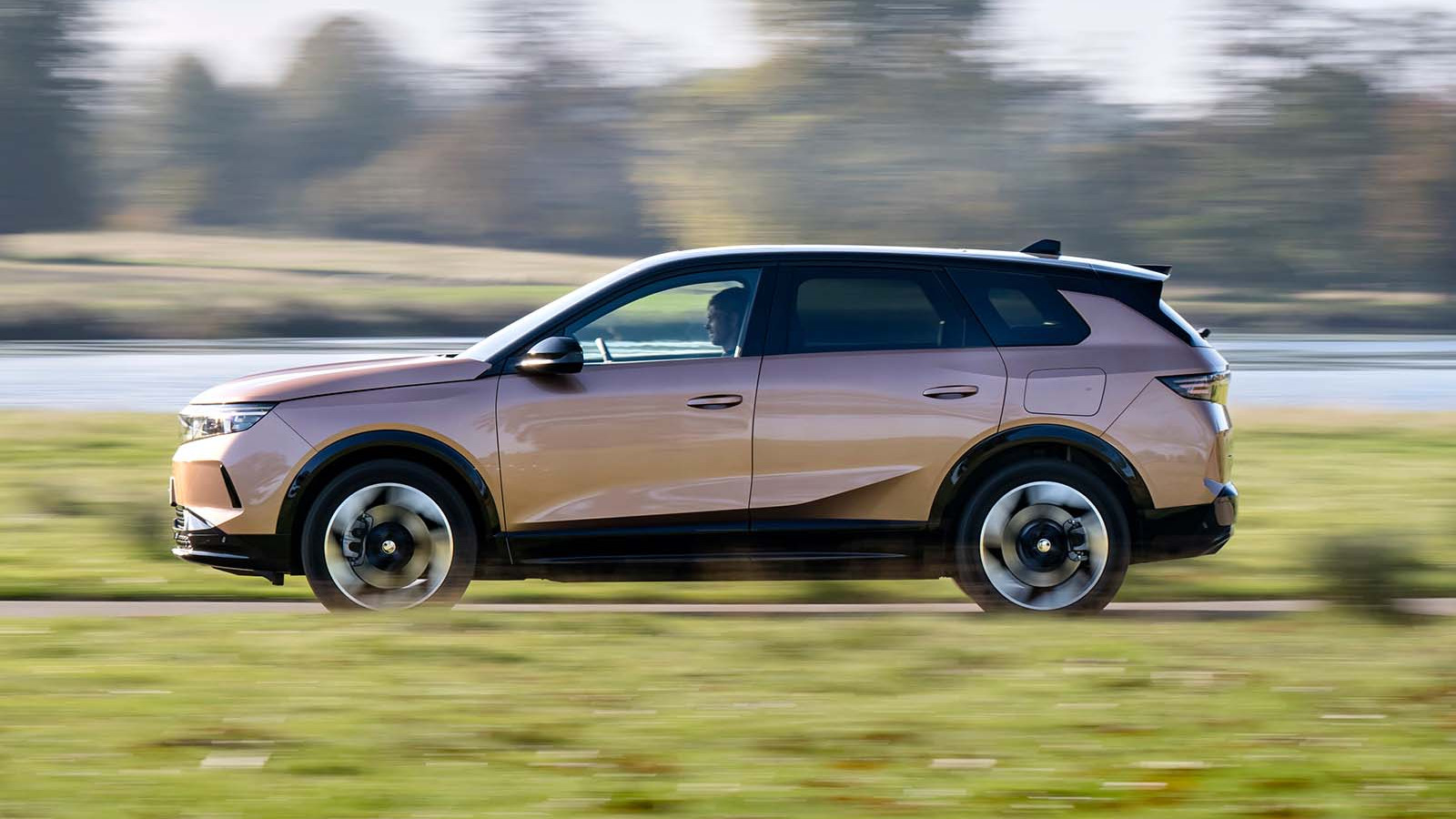-
 © Vauxhall
© Vauxhall -
 © Vauxhall
© Vauxhall -
 © Vauxhall
© Vauxhall -
 © Vauxhall
© Vauxhall -
 © Vauxhall
© Vauxhall -
 © Vauxhall
© Vauxhall -
 © Vauxhall
© Vauxhall -
 © Vauxhall
© Vauxhall -
 © Vauxhall
© Vauxhall -
 © Vauxhall
© Vauxhall -
 © Vauxhall
© Vauxhall -
 © Vauxhall
© Vauxhall
-
The new Vauxhall Grandland is the classic definition of something that delivers what you want and nothing more.
But before we get into this review, let's quickly recap and look at what the Grandland actually is.
-
This is the second generation of Vauxhall's biggest SUV, and its first electric one. It's a significant departure from its predecessor, sitting on an all-new platform called STLA Medium, which has resulted in it growing in size, both inside and outside.
The extra room has also allowed for the smaller Frontera to occupy the market space that the old, smaller car left.
-
A new platform is combined with new styling, including a bumper-width rear light bar, new alloys, a central lip running down the length of the bonnet, and a new front grille with 'plus' and 'minus' graphics to represent electrons - because of course this is electric.
-
From launch, the Grandland will only be available with a single 210bhp motor powering the front wheels. This is fed by a 73kWh battery, which, in combination with a standard-fit heat pump, has claimed energy efficiency of 3.6mpkWh and a total range of 318 miles. This is competitive for the class, but the maximum charging speed is better than almost all of its rivals, at 160kW.
-
Performance for the 210bhp version is slightly pedestrian. The power is combined with 254lb ft, making for a 0-62mph time of 9.0sec and a top speed of 106mph. You could argue that performance doesn’t matter much in the seven-seater market, but the new 501bhp Kia EV9 GT would probably disagree with that.
-
The motor provides good acceleration when you want it, but the throttle has not been tuned for a lightning-quick response. There are three levels of regenerative braking, controlled by steering wheel paddles, but the strongest isn't quite a one-pedal affair.
-
The 2120kg EV gets frequency selective dampers as standard, which adjust themselves to suit your driving style and the sort of roads you're driving on. They make the ride comfortable and, combined with a quiet powertrain, give the car a luxurious air.
-
It's the same story when the going gets twisty. This is an easy car to steer and place on the road, but it's not the most engaging on the market. The steering is direct, but at speed you can always feel the considerable weight of the battery beneath you.
-
Inside, there is as much space as its large exterior dimensions would have you believe. A large boot combines with lots of rear legroom and ergonomic, award-winning seats that are very comfortable indeed.
-
Directly in front of you sits a 16in touchscreen, as well as a digital instrumentation display for the driver. But because this is a Vauxhall, you also get physical buttons for important functions such as the air conditioning. It's all reassuringly familiar.
-
Bad points? Material quality could be better in places, even though this is a more competitively priced proposition than many of its rivals. We also found the steering wheel design to be slightly fussy.
On pricing, it undercuts many of its rivals in the UK. Entry-level Design trim starts at around £37,300, while Ultimate is just over £40,000. This makes it a more sensible financial proposition than many of its rivals.
-
A sensible, spacious seven seater that is as decent to drive as it is good value. It combines traditional Vauxhall qualities to allow it to ease into your life imperceptibly. However, if you want sportiness, design flair, or stronger acceleration, then you're better off looking elsewhere.
